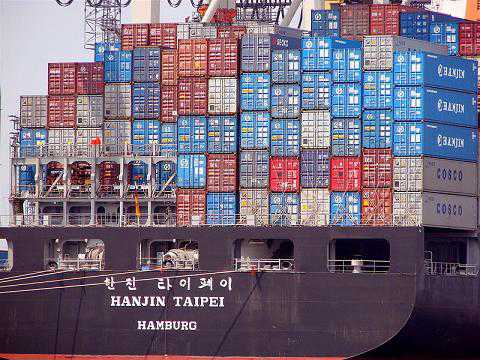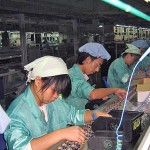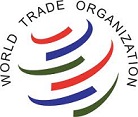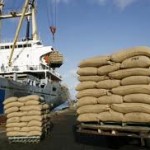International Business

Objective analysis of the past equips us with necessary knowledge and perspective to deal with the present and future. In other words, the importance of economic history and studying global factors and events that have formed the current economic situation has practical implications in terms of dealing with global economic issues and challenges (Coughlan and Coughlan, 2011). Changes in the world economy taking place since 1945 have resulted in international market expansion for many businesses erasing borders between countries to a certain extent, and providing vast opportunities for businesses. However, this process was not unilinear, i.e. economic changes taking place after 1945 did not have the same impact for all countries and businesses. The nature of economic changes taking place in each geographical location after the Second World War, as well as, the impact of these changes on the performance of private entities depend on a wide range of factors such as political and economic system within the country, the level of economic development and infrastructure etc. Global economic reality by the end of World War II, as aftermath of the Great Depression of 1930’s is referred to as a ‘Golden Age of Capitalism’ and this period lasted until till the beginning of 1970’s (Weber, 2007). Specific factors contributing to the significant rise of consumerism especially in USA in this period include the ‘baby boom’, rapid developments of automobile and aviation industries, and others. The period of the ‘Golden Age of Capitalism’ from 1945 until 1986 is also marked with US dollar becoming the world’s major reserve currency and “between 1945 and the mid-1960s the United States may have accounted for 85 per cent of all new FDI flows” (Jones, 2005, online). Leading positions in many industries were assumed by US corporations in a global scale putting a foundation for…

There is a set of problems developing nations facing in world market when trading with industrialised countries: a) Nondiversified economies Many developing nations’ economies are highly dependent on the advanced nations as majority of their exports go to advanced nations and imports come from these advanced nations (Carbaugh 2004) b) Unstable export markets Another characteristic of many developing nations exports are based on primary products (agricultural products, raw materials and fuels) as shown table below. Therefore, when there is a poor harvest or decrease in demand for nation’s specialised product, it can significantly reduce revenues from export and seriously disrupt domestic income and damage employment levels. (Carbaugh 2004). Developing-Nation Dependence on Primary Product 2000 Country Major Export Product Major Export Product as a Percentage of Total Exports Nigeria Oil 96% Saudi Arabia Oil 86 Venezuela Oil 86 Burundi Coffee 79 Mauritania Iron ore 56 Zambia Copper 56 Ethiopia Coffee 54 Chad Cotton 40 Rwanda Coffee 31 Adapted from R. Carbaugh’s “International Economics” (2004, p. 234) c) Worsening terms of trade According to Mankiw (2004) developing nations complain that their commodity terms of trade has declined long time ago, meaning that prices of their exports relative to their imports have fallen. Observers maintain that the export prices of primary products of developing nations determined in competitive market, whereas the monopoly of manufacturers in the industrial nations results in high prices. Furthermore, worsening terms of trade has been used to justify refusal of many developing nations from to attend in trade-liberalisation negotiations (Carbaugh 2004). d) Limited market access. Integration of developing countries as whole into world market has improved significantly. However, protectionism and trade barriers imposed by many advanced nations has been hindrance to developing nations’s market access (Economist.com). Specially, global protectionism in agriculture has been major problem for…

The People’s Republic of China has an area of 9.6 million square kilometres which comprises over 1.35 billion population (China country profile, BBC, 2011). Rapidly deviating from the centrally-planned economy the country had adhered to for several decades, and embracing the elements of free market economy, China is seen by many as an emerging superpower able to compete with highly developed countries in the global marketplace (Lou and Wang, 2009). Interestingly, the current dynamic of employment relationships in China somehow resemble the second industrial revolution in Europe that has commenced at the second half of the 19th century. Specifically, the common features include harsh working conditions, impaired employee rights, underdeveloped employment laws, migrant labour, high employee turnover etc. However, while the second industrial revolution in Europe has been caused by the introduction and perfection of mass production and production line, in the case of China the current dynamic of employment relationships is caused by the increasing forces of globalisation in general, and China’s accession in WTO in particular. Employment relations can be defined as “a contractual relation in the framework of which one party (the employee) undertakes to perform dependent work personally for wages for the other party (the employer)” (Barancova and Olsovska, 2011, p.73). The most common legal characteristics of employment relationship include: a) the type of personal obligation; b) the subordination of employee in personal and economic levels; c) payment of wages; and social character. The Impact of Globalisation on Employment Relations in China Generally, the major impacts of globalisation on employment relationships in China include the introduction of labour contract system, employee wage system changes, marketisation of social security, changes in labour rights, changes in corporate culture in China, and changes in labour union legislation. The Introduction of Labour Contract System The introduction of labour…
By John Dudovskiy
Category: International Business

The process of globalisation has had significant impacts on personal and professional aspects of lives of people across the globe. Moreover defined as “information, capital, and innovation flow all over the world at top speed, enabled by technology and fuelled by consumers’ desires for access to the best and least expensive products” (Ohmae, 1995, in Murray, 2006, p.13), globalisation has resulted in substantial implications on employment relation practices and legislations for many countries worldwide. Globalisation supporters advocate “the elimination of trade barriers such as tariffs so that developing countries can compete in the global market, thereby reducing dependency on developed ones” (Weightman, 2011, p.21). At the same time, globalisation also has its critics who point to increased chances of economic disruptions taking country affecting other countries, greater chances of various diseases being transported to other countries in unintentional manner, violations of employee rights and the abuse of their labour in undeveloped and developing countries etc. References Murray, W.E. (2006) “Geographies of globalisation” Routledge Weightman, B.A. (2011) “Dragons and Tigers: A Geography of South, East, and Southeast Asia” John Wiley & Sons
By John Dudovskiy
Category: International Business

Each business entity operating within the European Union (EU) is bound to operate within the boundaries of legislation issued by the government of the home country of the business, as well as, the rules and regulations of the EU. The Treaty on the Functioning of the European Union (TFEU) “organises the functioning of the Union and determines the areas of, delimitation of, and arrangements for exercising its competences” (TFEU, p.4), this includes economic activities as well, and therefore, has a direct affect on activities of business entities operating within the union. This essay analyses activities that are prohibited by Article 101 of the TFEU and also explores some other related issues. Article 101 “applies to agreements between undertakings and declares these agreements void when they are found to restrict the competition” (Chalmers et al, 2010, p.962). The paper starts with specifying activities that are prohibited by Article 101 followed by explanations for the prohibition of those activities offered by some distinguished European business researchers and practitioners. Moreover, evaluations of efficiency of prohibition enforcements are undertaken taking into account the secondary data findings regarding the issue. Prohibited Activities by TFEU Article 101 A range of certain activities have been prohibited by Article 101 of TFEU in order to promote fair competition within EU. As most of the formal legal texts, TFEU texts have been perfected by professionals in legal industry in order to achieve a high level of clarity, avoid any ambiguity and thus, possible misunderstandings and even manipulations. Nevertheless, TFEU texts, including Article 101 may be not clear for people with no formal legal qualifications, and thus it makes sense to explain the article in great detail before proceeding to discussions about the reasons of prohibition and the efficiency level of its enforcement. The article starts with “The following…
By John Dudovskiy
Category: International Business

Globalisation along with other factors like technological advancement and increasing role of internet has changed the ways businesses are conducted dramatically and irreversibly. Nowadays, any company with an innovative product or service, right price and effective marketing strategy has an opportunity to lead its market globally employing hundreds of thousands employees and generating annual revenues to be counted in tens of billions of pounds. This is possible because today “no country or group can shut itself off from others” (Beck, 2000, p.10) in terms of their economic activities in general, and export to the country in particular. However, implementing the same approach in various markets in terms of pricing, marketing, packaging and other aspects of the product may not work well due to cultural and other differences associated with each particular market. This article is a critical analysis of the approach of “Think Globally, Act Locally” and analyses the need for multinational companies to adapt to the characteristics of each individual market they are operating in. The paper starts with the discussion regarding the importance of the approach “Think Globally, Act Locally” followed by the analyses of application of this concept by some of the famous multinational companies. Then, difficulties associated with the need for multinational businesses to adapt to local markets are explained in great detail referring to the works of international businesses researchers and practitioners. Lastly, recommendations are also provided within the paper regarding how multinational companies already operating in multiple markets, as well as companies trading locally, but with the expansions plans on a global level can achieve successful operations across borders and continents through to their local markets, thus effectively attracting local customers. The Importance of “Think Globally, Act Locally” Approach The primary reasons of globalisation have to be reminded briefly in order to explore…
By John Dudovskiy
Category: International Business

Greenfield investment is a type of business expansion where investments are made on the facilities in a new market where there were no such a facilities previously (Barclay, 2002). Aldi and Lidl have increasingly relied in greenfield investment as they main new market entry strategy. The choice of greenfield investment was done by Aldi and Lidl management among other alternative methods of new market entry such as exports, forming joint-ventures, mergers and acquisitions etc. for a range of reasons. All of these new market entry strategies have their advantages and disadvantages some of them have been discussed below. According to Ando (2006) companies will be in a better position to fully utilize their company-specific advantages if their choose greenfield investment as their new market entry strategy. This statement can be shown as one of the main reasons why Aldi and Lidl have increasingly relied on greenfield investment as their main new market entry strategy. Both companies had their competitive advantages that were their ability to keep business costs down by saving on additional costs such as customer services, ‘art-of-state’ shop designs and additional features. If Aldi and Lidl had chosen any alternative new market entry strategy their current competitive advantages would be put under risk, threatening to the overall success of the business. Moreover, “reasons for greenfield investment could be that companies frequently make foreign investments where there is little or no competition, so finding a company to buy may be difficult” (Epperlein, 2007, p.22). This argument was true as well due to the fact that discount retailing business concept Aldi and Lidl adhered to was relatively new at the time of their expansion and there were no retailers using the same business concepts in Aldi and Lidl target markets, these companies could form joint-ventures with. Another possible reason for the…

The contribution of trade to the economy of a country is beyond any doubts. The positive contribution of trade to the economy of a country is done through creation of new jobs, encouraging entrepreneurial activities, and bringing new skills, knowledge and competencies into the country. Founded in 1995 World Trade Organisation (WTO) deals with the rules of trade between nations at a global or near-global level by providing a negotiating forum and helping to settle disputes. Until its formation in 1995, some of the main function of WTO including formulating the rules of international trade was performed by the General Agreement on Tariffs and Trade (GATT) since 1948 (Peng, 2009). Scope of the WTO In order to analyse at what extent WTO is contributing to the facilitation of the international trade it is necessary to establish the scope of the organisation. Currently WTO has 153 members and 30 observers, most of whom are striving to be members (Members and Observers, online 2011). Moreover, the amount of trade engaged in by WTO members account for over 97 percent of the total world trade (The Organisation, online, 2011). WTO Contribution to International Trade WTO positively contributes to international trade in many ways. However, the contribution of WTO to the facilitation of international trade can be seen by the principles that the organisation has adopted. Specifically the main Principles of WTO can be summarised in the following points: A) Trade without discrimination. WTO does not allow trade discrimination among its members. If any WTO member wishes to grant advantages to any of their partners within WTO like lower taxes for their products, all other WTO members should be granted such an advantage as well. This particular principle is also referred to as the most-favourite-nation (MFN) treatment as well. The adherence…
By John Dudovskiy
Category: International Business

Differences between inter-industry and intra-industry trade. International trade is one of the key factors of macroeconomic prosperity for any country. Today with the increasing force of globalisation international trade has become very complex with multi-billion transactions taking place every year. Yet, some of the aspects of international trade are still not fully researched and even existing theories related to the international trade need to be submitted to critical analysis taking into account ever-changing global economic environment. Difference between Inter-industry and Intra-industry trade Although their wording is very similar the terms ‘inter-industry’ and intra-industry’ trade have a very different meanings. Inter-industry trade is a trade of products that belong to different industries. For instance, the trade of agricultural products produced in one country with technological equipment produced in another country can be classified to be an inter-industry trade. Countries usually engage in inter-industry trade according to their competitive advantages. Intra-industry trade, on the other hand, is a trade of products that belong to the same industry. As it has been noted, “intra-industry trade (IIT), that is trade of similar products, has been a key factor in trade growth in recent decades. These trends have mostly been attributed to the fragmentation of production (outsourcing and offshoring) as a result of globalisation and new technologies” (Handjiski et al, 2010, p.15). Explanation of Intra-Industry Trade by Economic Theory It first sight it may seem strange that countries do engage in importing and exporting same type of products with their international partners. However, there are a range of benefits intra-industry trade offers businesses and countries engaging in it in general. The benefits of intra-industry trade have been explained by various business researchers, and all of these benefits can be summarised into three points that which is illustrated by Johnson and Taylor (2009) in…
By John Dudovskiy
Category: International Business
